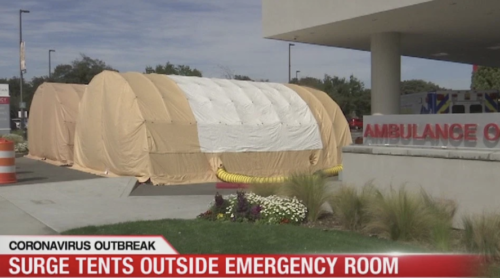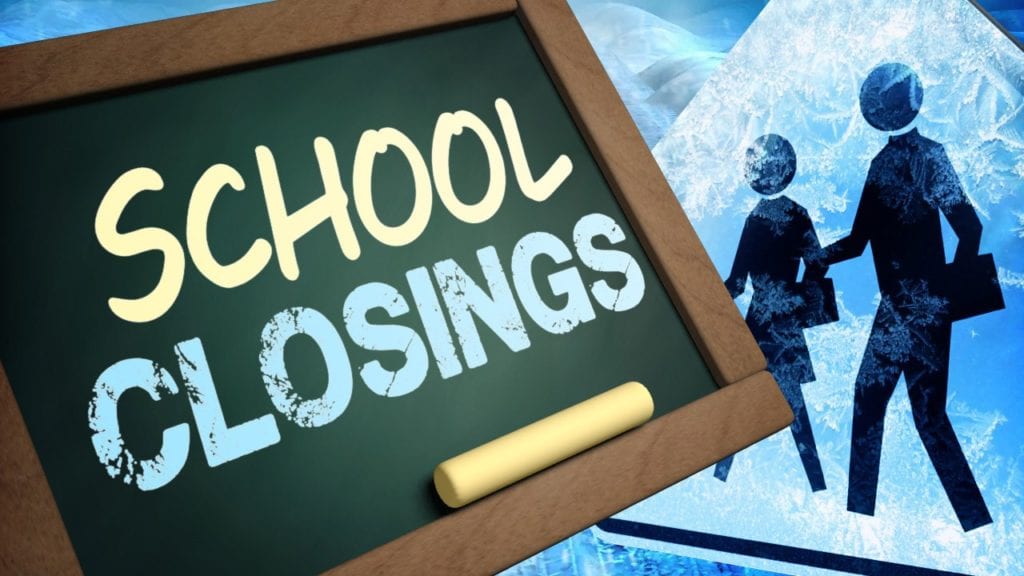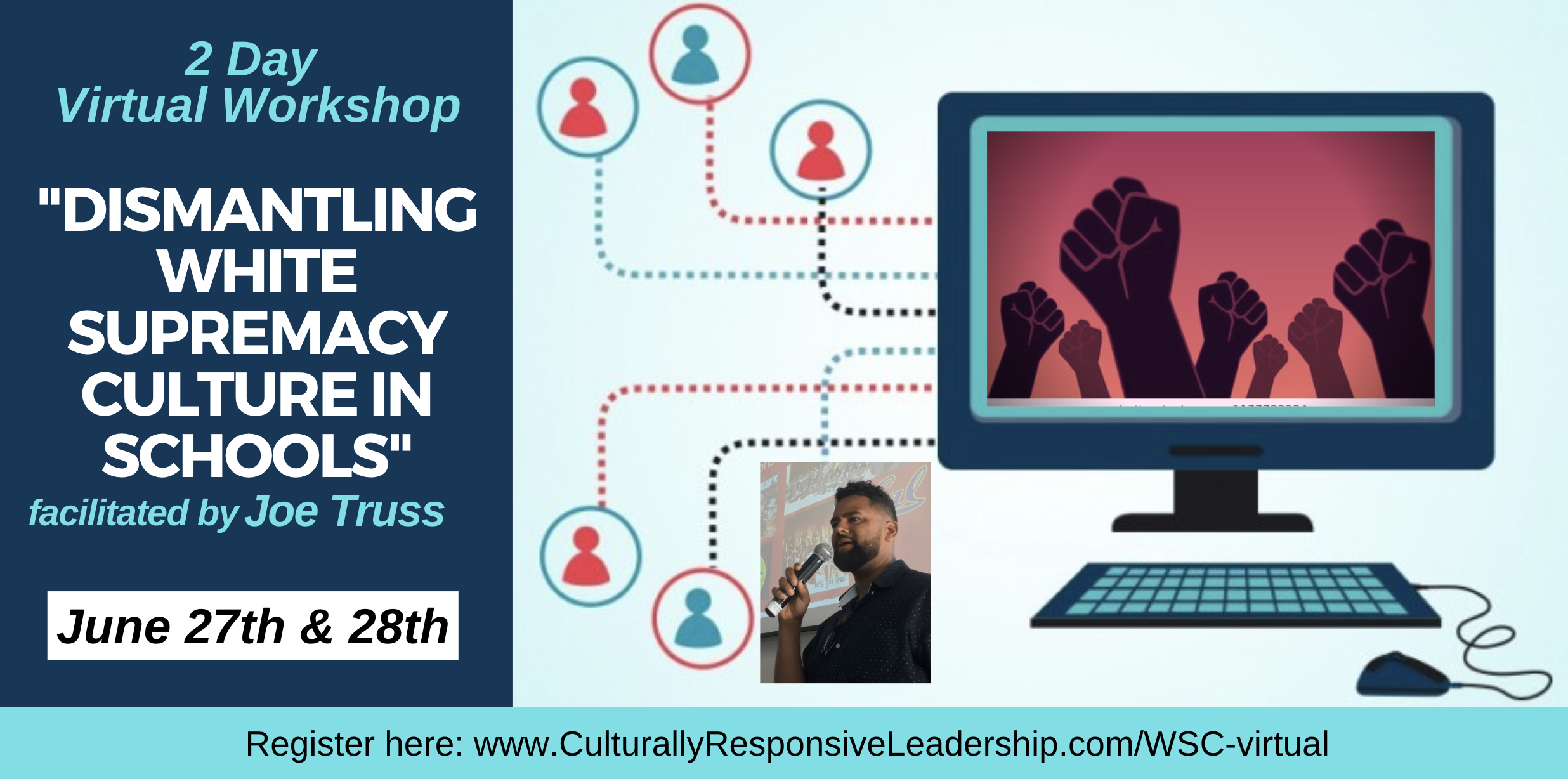A School Principal Ponders Pandemic Pedagogy and a Coronavirus Project Plan (4 part series)
I am finally sitting down, after 3 weeks of shelter in place. (sigh) I am just starting to calm down enough to think, and write, and reflect. Here are my reflections on the coronavirus, distance learning, and what the hell it means for our education system.
Ok. Here’s the current reality. The coronavirus is spreading and we are averaging a thousand deaths per day, 13,000 deaths as of April 7th, 2020. I am sure it has gone up, and hopefully down, by the time you are reading this. 75 million students are on laptops (well some of them) and teachers are on Zoom and Google Classroom delivering “distance learning.” It is clear that things will never be the same, and we are all stuck in this purgatory of pedagogy and purpose. As an educator, in addition to processing this moment, I am trying to figure out how this impacts schooling. As a Principal, I wanted to put some of my thoughts on paper and share some things I am considering. Let’s begin with how the hell we got to this strange and scary time.
Part 1 – And Just Like That We Closed Schools
I’ll be honest, when news first started to break about this virus, I was intrigued and worried. As the numbers began to grow, especially in the US, I was all ears. If that wasn’t enough, I now had to think about keeping the folks at my school safe. This was a hell of a lot for a person to process. I know we were all holding it together, while we didn’t know if we were going to close or stay open. Things were changing, week to week, then day to day, then it felt like shit was minute to minute. Emails, updates, text messages. At certain points we were getting our news from rumor and twitter posts. What the fuck has the world come to, that we are both looking to twitter for news and also using it.
Communications got fractured and people started to spiral. Everyone had a different plan. Distribute the tech. No, don’t. Sign everyone up for google classroom. Nah, wait. Pass out this form to the students. Translate it. Copy these packets. Send home autodialer messages. Shit got real, and it was moving way too fast. More messages from the mayor, governor, president. And as the Principal, I was supposed to have some sort of answers. But I didn’t. I was supposed to make some kind of calls, but I shouldn’t. Are we gonna close? No. Are we gonna close now? No. But Seattle just closed. We are a big city. Us? No. And just like that, out of nowhere, with 2 days notice, we were closed!
Pack up your stuff. We out. Sort of.
We didn’t know what that meant at first. We were closed. Teachers were off. Kids were home with packets and a flyer saying where they could get food the next week. We were all waiting for news from the governor, state superintendent, school board, our superintendent, shit anyone. And there were messages. Too many. Some conflicting, some vague. We were supposed to sort it out, and wait, but everyone wanted answers. And I’m the Principal, so I should know some right?
Oh yeah, I also have a family and I am a human, with my own emotions. So I was scared like everyone else. Panic shopping. Filling up my gas tank, buying food staples, making sure the ATM still works. I was panicked. I am brown and folks were talking about shutting down the state. I know what’s up. They ain’t gonna get me and my brown family if shit hits the fan. So for the first week and a half I was just scared. Obsessively watching CNN, reading articles, talking to my doctor friends. Wondering how many people I came into contact with in a big city like San Francisco. A lot. I work at a school, and we were open way longer than we needed to be. Shit, I have a pregnant wife at home and I shouldn’t have to worry about anyone other than my family, just like everyone else. I was shook, still am, but I really was scared. Numbers started growing. Other states started closing schools, sheltering in place, banning non-essential services. I had more free time but couldn’t even get out of the house. Didn’t exercise. I was snacking like I still had a fast metabolism.
After about 2 weeks, my head started to clear up. I started zooming out. I started remembering all the other things that were going on. My writing. My business. My family, my-soon-to-be second daughter. And somewhere in the background (even though our puritan, martyrdom education system would rather place it in the foreground), somewhere in the background was school and “distance learning.”
As Principals, we were asked to get students ready for distance learning, and get teachers ready for it, too. That’s a lot when there’s not a crisis going on, when folks aren’t splitting their time taking care of kids (doing “distance learning”), when we have enough notice to prepare. That’s a lot to do, when we can actually see folks face-to-face. But meanwhile people are dying, our president can’t lead the country towards security, and we are glorified babysitters, staying open only to feed children and supervise them. But somewhere in all that I was supposed to be leading staff to transition to distance learning. C’mon dawg. Was I ready for this? Was my capacity built? Was my mental health intact? How the hell am I supposed to prepare my people?
I am on social media, so I started seeing all these “super parents” online posting their schedules (try that shit with 30 kids all day). I saw these staged pictures of 3 kids on laptops, while the parent is also on a Zoom conference “working from home.” Get the fuck out here with that shit. That is not real. And if it is, check your privilege. But I saw this and thought, we need a schedule and structure too. And if the kids need structure, then the teachers need it, and I need to lead it. Once again, pressure, and stress.
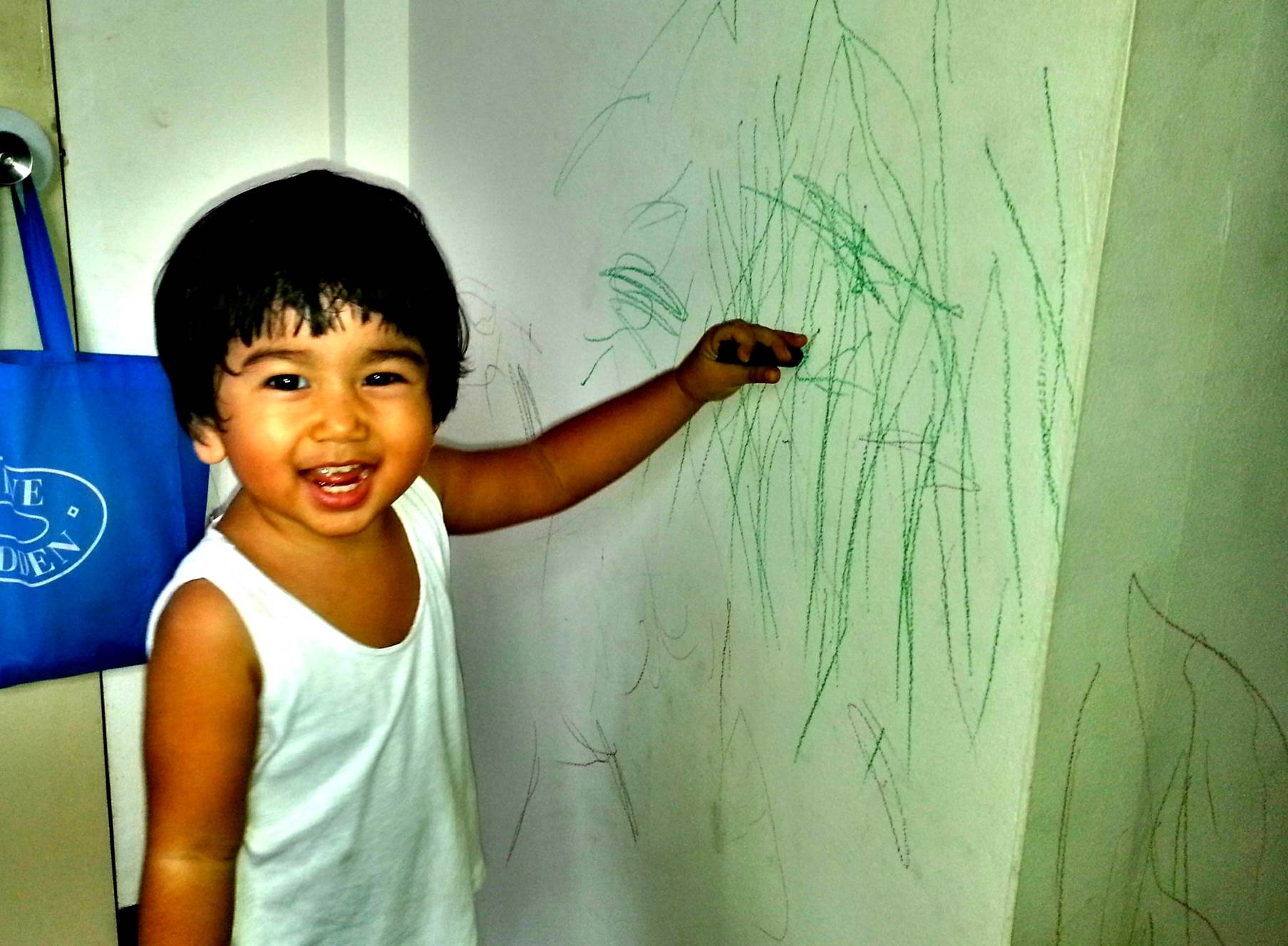
I tried some of that, but then my toddler threw a fit, drew on the wall, and pooped on the floor, because I wasn’t paying enough attention. (Now that’s real). How can we expect kids to be plugged in all day when their homes can look just like ours? On a good day, busy and sharing with other humans going through their own process. In a bad situation, filled with as many people necessary to pay the rent. In a worse situation, a dysfunctional or unsafe home, where our kids are just trying to stay alive and relatively safe. It’s fucking hard being a kid. Exposure to trauma, domestic violence, food insecurity, drug/alcohol use, etc. And that’s without a pandemic going on, that leaves millions of people un/under employed and terrifyingly uncertain about the future. This crisis only compounds the stress and further triggers everyone. Kids might be beat more. Parents might be more absent or negligent. So we can’t have the same expectations and we have to be understanding of what our kids, educators, and families are going through. Not all, but let’s place our most marginalized, targeted, oppressed, and underserved at the center, for once.
That being said, at some point, I calmed down and returned to my solace, writing and talking shit on twitter. That led me to writing this piece and I hope it opens up conversations and pushes our thinking.
Part 2 – 10 Provocations about Distance Learning
Ok, enough of the tangents (about real life shit). What about learning and education? As I have started to prepare my staff for this transition, filled with shared docs, zoom meetings, webinars, and google classrooms, and surveys, I have a few thoughts on the matter of Distance Learning. Here are 19 provocations that I’m pondering during this pandemic:
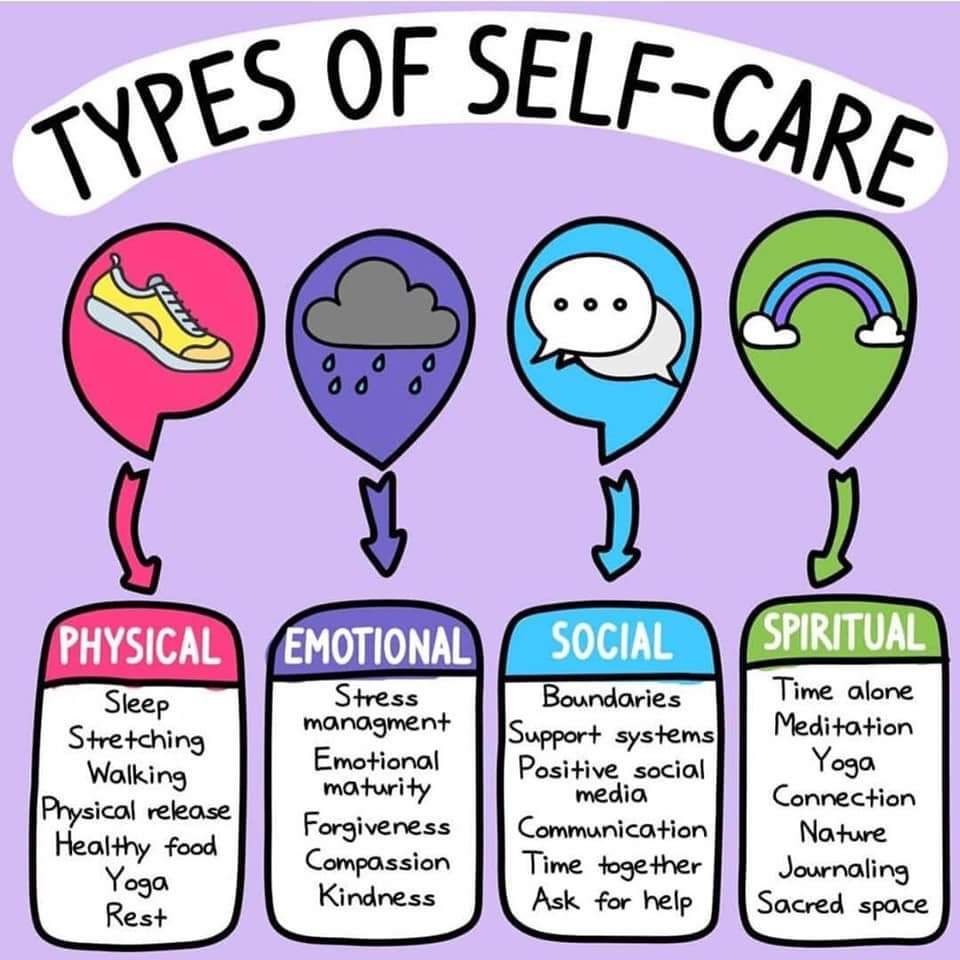
- Slow the hell down and just take care of yourself. We jumped into this work, thinking we needed to keep up with the most fast paced school, or the pinterest homeschooler, or produce for the most helicoptering parent. We can see the tenets of white supremacy culture (sense of urgency, products over process, more is better, etc) all throughout this. If you aren’t familiar with WSC, check out this article. But instead, we need to relax, rest, and figure out what the hell is going on. We need to check in our own mental health, make sure our friends, family and loved ones are healthy, and THEN, we can think about the work of education. And that starts with you leader! We also need to slow down with our students and find out how they are doing. Authors from Teaching Tolerance write, “Relationships and well-being can take priority over assignment and behavioral compliance,” in their great article, A Trauma-Informed Approach to Teaching Through Coronavirus. The authors continue to state that “A sense of safety, connectedness, and hope” are critical components.
- Burn them damn packets, now! Packets were dead in the water, when we could still see our students. When we can’t they are worse. Those recopied copies from the 80s (with the purple ink) are not saving education in 2020, especially during a pandemic. Thinking that we just need to give kids “work to do,” is not good enough. I fucking hate packets, so why are we giving kids so many packets. And, if it hasn’t been said today, just because you upload them to google classroom, doesn’t mean you are doing distance learning. We need to give kids work that is relevant, interesting, and curiosity sparking. Packets ain’t it baby. Zaretta Hammond is starting to open up this conversation in her webinar series, Covid-19 Beyond Packets, Creating More Culturally Responsive Distance Learning Experiences. In addition to substituting packets with deeper learning experiences, online or on paper we could do a few other things. We can empty our school libraries and class libraries to fill out students homes with books. Remember those, they are the bound pages of text that used to teach kids. Invite kids to our schools to leave with any books they want, or better yet drive through out neighborhoods delivering books (and food) to students. If we can giveaway $300-$1000 laptops, know damn well that we might not get many of them back, we can give away…books. Kids might read then when they get bored of the same ole stuff on their screens.
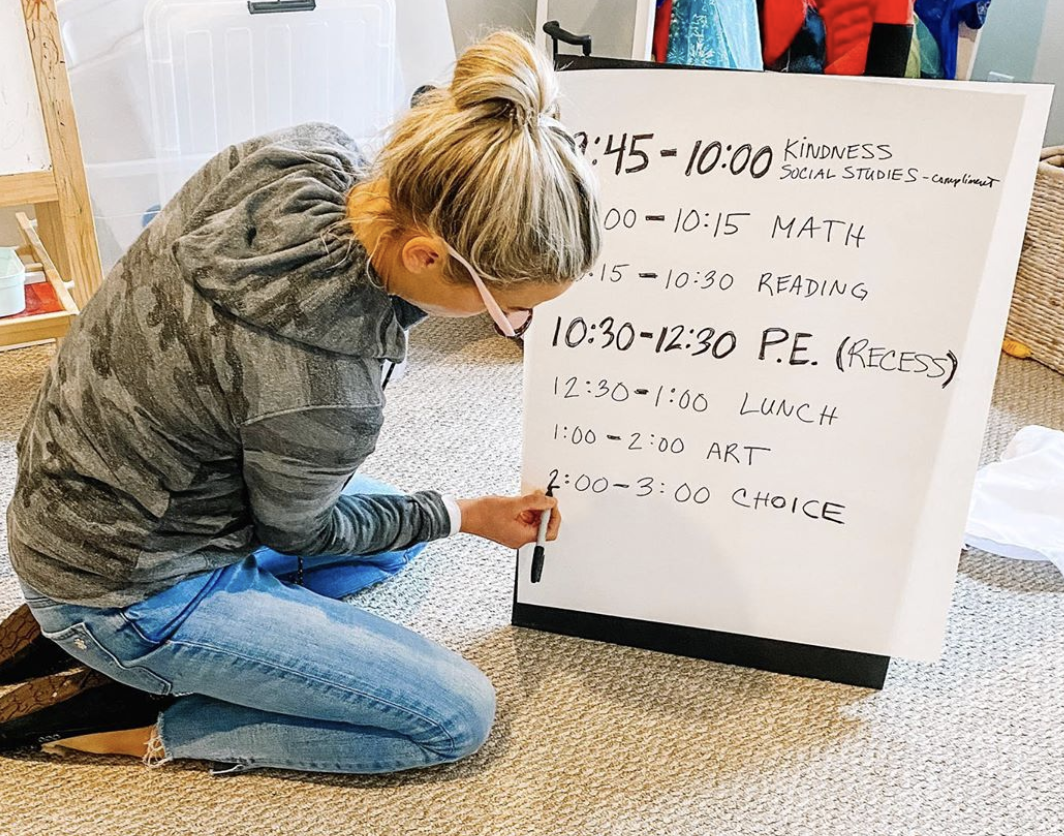
- Let’s not schedule when students go pee and poop. Because we can’t. Because they are actually free now. But seriously, instead of these detailed ass schedules, let’s have much more flex time. Make suggestions of what kids could do. Make it like bingo. You get a dot for reading a book, watching the news, exercise, caring for a family member, journalism. And you do it whenever the hell you want. Jen Gonzalez writes about “asynchronous learning…meaning participants can access the conversation whenever it’s convenient; they don’t need to be present at the same time,” in her blog post Distance Learning: A Gently Curated Collection of Resources for Teachers. Record videos, screencastify that shit, and leave directions written. We claim to value student-led learning, right? Instead of scheduled classes, equaling the number that happened before, make it all self-paced and choose your own adventure. (Side note, what if we had more time like this when we get back into physical school buildings, I know it would help middle schoolers to be outside, in control, and moving). There is this urgency to have everything in its box, but we have to realize that kids don’t (ever) want to be on a schedule. That’s harder at home with possibly multiple kids, maybe not as many tech devices. Harder to find a quiet place to do work, read, let alone get quiet enough to do a zoom conference. All kids don’t have their own rooms or a kitchen table to sit at. I sure didn’t as a kid, in a Tenderloin studio apartment. Offer some office hours that kids could pop into if needed, and post recorded videos of you teaching. That way, students can access it when they can. And if we are deciding how many hours of “seat time” if we can call it that anymore, less time is more. I would venture to say that kids can get about 2-3 hours of work done each day, including independent time.
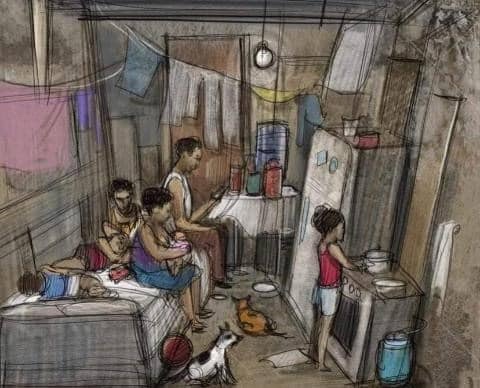
- Distance Learning exposes and exacerbates the educational opportunity gap created by poverty and institutional racism. In education, we are in the work of service, but not at our own demise. And we can’t solve generational poverty, on a shoestring budget, when we can’t see our people, while we work from home; at least not at this breakneck pace. Folks have been poor. We knew this. The rich knew this. Schools continue to be the one stop shop for all services for poor/brown children, but also the cheapest bandaid that society will place on its festering wound. Let’s not act like it is up to the school system to fix the virus and poverty, while educating students. Specifically, I am talking about food, shelter, safety, technology access, etc. We can’t all of a sudden rush to do this. And it can’t fall on educators serving oppressed students to figure this out. Government and local schools boards need to take the issue of inequality head on. Teachers will continue to try harder, because that’s what we signed up for, but it is not solely our fault. But let’s be honest that there is an access gap for many students of color, low income students, and immigrant students. This includes access to wifi, computers, spacious and calm homes, and basic needs. Taharee Jackson writes ‘video-classism’ in her recent article. She writes, “I worry about the psychological effects and downright trauma of having those who learn and work alongside us having a requisite glimpse into our homes, making inferences about our social class, and subsequently judging us for it. I worry.” I’m worried about my messy apartment. And I’m grown. If kids, can even get online, I’m sure they might be worried about much more being judged in their video screen. Distance Learning also exposes the gaps due to formal education of parents/guardians, previous skill gaps in student education, and current reading level. Plenty of inequities that will only be exacerbated by a lack of routine, less support from teachers, and more chaos. We will do our best to fill the gap during these unprecedented times, so let’s not hold it against students if they can’t produce as much, aren’t as responsive, or responsible. We can’t do it either. It’s a crisis folks!
- Let’s just give everybody a pass and settle up next year. Why are we tripping off grades so much? I read a great twitter post that said, “if grades are the only thing making your kids do the work, your work is shit.” I am paraphrasing, but you get the point. Make the work interesting, even if there is less of it. What would happen if we just didn’t grade the work, or get this, what if we just gave students…feedback? We could give them their highest grade of the year so far. Or better yet, as Dr. Manuel Rustin writes, “Millions of students have suddenly been thrust into a distance learning experience that schools never prepared them for” so we should as the title of his recent article suggests “Give Them All As.” Preach you compassionate brother. I do think we need to establish some parameters so teachers don’t plan to punish students who can’t do their best work under these conditions. Who cares if they can’t take a final. Kids are stressed and lost in this chaos too. They don’t need more stress, just like we don’t. Round up their grades. If we give everyone a pass, that at least is equal, if not equitable, but it won’t further hurt marginalized and oppressed children.

- Teachers better be getting paid much more after this. Much more. Like a shit ton more. As folks have to TRY to educate their children at home, they are seeing how challenging 1-5 kids are. Now imagine 35 at the same time, in one room for an hour to a day. It is the most demanding work I have ever done, on my energy, on my emotions, on my patience, on my intellectual power. We need to pay educators wha they deserve or more. As parents attempt to to lead remote learning, and then give up completely, parents will understand the true value of teaches. When it’s voting time, folks better remember to support teacher raises, to increase funding for public education, and tax the rich to pay for it. Yeah I said it. Tax the rich. I can’t leave out other essential workers (nurses, doctors, truck drivers, bus drivers, farmers, etc). Pay them like our society depends on them. Or better. Because our society does depend on our essential workers like teachers.
- Give our teachers and staff time to transition. I was happy to see our school district give teachers between 2-4 weeks to prep, depending on when you heard and what time you count. Although it wasn’t super clear to kids when we first closed schools, the message came out clear that work was optional, grading was optional, and teachers needed time to prepare. To build tech capacity, to read, to think about curriculum, to upload materials. I feel bad for the districts and schools that went right from in person school to virtual school. We didn’t do that, and it still felt like we were moving too fast. I would add that we need to first prioritize the mental and physical health of our teachers, before we even talk about prepping for learning. This looks like a few weeks for teachers to prepare, before we assign anything or expect things to get done. If you are already rolling, slow down and give your folks time to build capacity first.
- We need SEL more than ever. Our fist units with kids need to be just checking in on them, creating a sense of community and hearing from them. This is where SEL comes in, Second Step, all that stuff. Make it relevant to the kids. There is plenty to talk about. The first and fundamental class is homeroom, advisory, opening circle. This is vital to development, learning, and intellectual safety. Get that oxytocin flowing. This is a time for students to think about self management, being aware of their emotions, and thinking about how others are experiencing this crisis.
- We don’t need to keep up with the private school Joneses. “Oh I heard that X school is assigning this much work, or “Y school has kids sitting in their uniforms on zoom” or “Z school already has the tech passed out.” Damn Gina. We already have to measure ourselves against these schools, when we don’t have access to the same current resources, let alone generational wealth and luxuries. We cannot live in the shadow of folks who have the privilege of not being worried or concerned at this point or the people who have been preparing for this because they were privileged enough to prepare for said circumstance. Schools who aren’t normally in crisis, or working to support families in crisis, have had all the privileges to be ready for distance learning. Shit, they were probably tipped off a few weeks early to what was going and actually had more time. They been had tech, and google classrooms, and quiet places to learn. What we got in public education? District mandated textbooks. So in these times, let’s not be hard on our hard working public school teachers who can’t solve poverty today.
- Shit rolls downhill, but love and care can also roll downhill. As leaders we have the opportunity to create further stress for our community or we can buffer our schools from the political and social pressures. I could start creating my own dehumanizing and inequitable policies. I could make teachers feel like they are behind the curve and push them to push kids. But that makes things worse. Or I could step back and breathe. Ask my teachers how they are doing and work with them to figure out how to check on the kids. 2 leaders recently brought a powerful quote back, in my mind. It comes from the Masai people, and goes, “Kasserian Ingera” translated to ask, “and how are the children?” Let’s ask our teachers to ask our kids, how are they doing? That is the fundamental question right now. How are you? How is your family? What are you needs? What are your questions? How can I help, even if that means referring families to a service that the city or county can provide. Our teachers are some of the most important, influential, and inspiring people in our students’ lives. Especially during adolescence.
If you haven’t been to one of my workshops in the past, here is your chance. Given the current pandemic, I am offering it virtually, for the first time. Let’s take advantage of this opportunity to work towards recreating anti-racist schools. Register here.
Part 3 – 9 More Provocations for Distance Learning and the New Normal
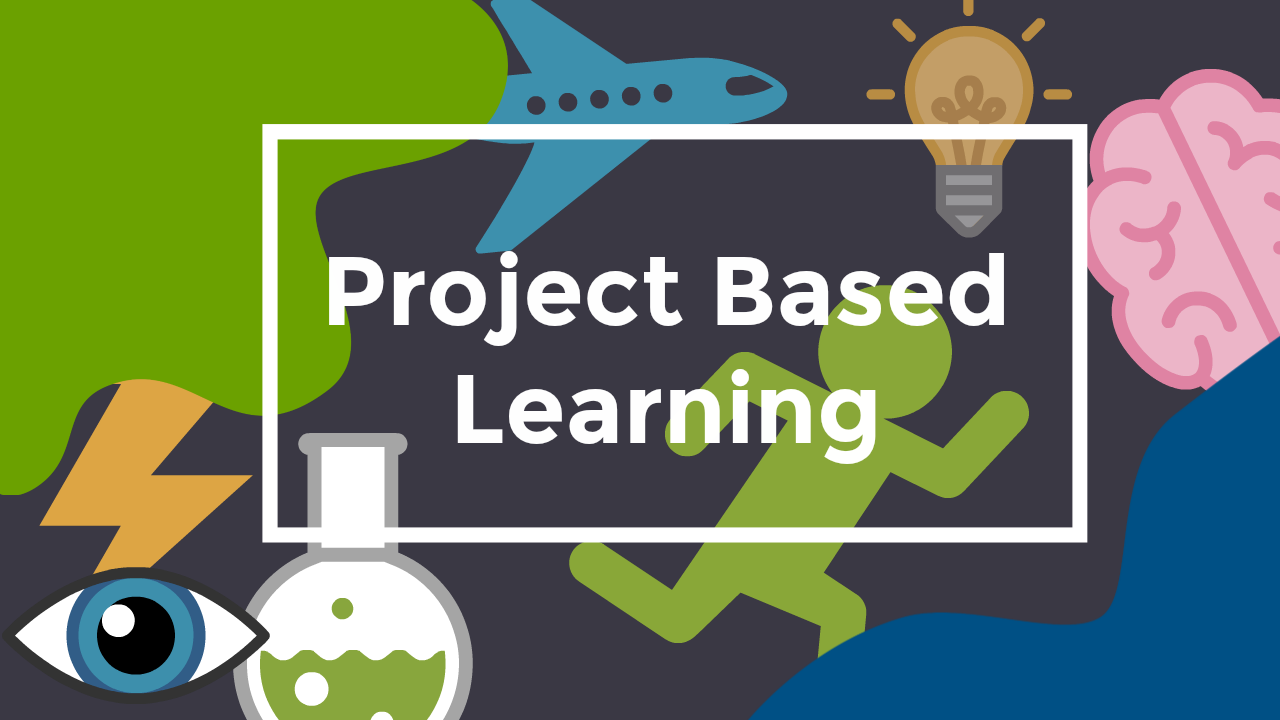
- PBL still reigns supreme. This is a great opportunity for problem/project based learning. Infectious disease, economics, policy and government. Ok if we are going to assign anything let’s make it about the times we are in. What if there was only one project between now and summer, and it was cross curricular? How bout this for an essential question: What led to the covid19 outbreak and how will it change our society forever? Teachers in a grade level could work together to each take pieces of the project so students experience one deep project. Plenty of math in the number of cases and exponential growth, not to mention disproportionate exposure for poor brown folks. History teachers could take up disease spread in the past or how public policy intersects with the crisis. English teachers might offer a novel about disease or better yet, a young adult’s post apocalyptic story. Parable of the Sower is a great one! Science, come one, plenty there. Science, too easy. Art, kids could look at the art boom that happened during previous plagues, look at the art being produced now, or produce art inspired by these crazy times. So many ideas, but in short connect it to one big essential question. This could be kicked off with a video challenge from a local politician, a school’s principal, or your superintendent. Imagine if we had finished products in various forms all hosted in one place where kids could see each other’s products and comment. Boom. This needs to be a separate post and project. (it is now!)
- Parent Educators and folks caring for their children at home need a pass. How can we expect any parents, at home chasing around/supporting their kids, to do anything productive. I am trying my best, but I don’t have 150 students supposedly waiting for me to produce and assess assignments. If we know that as individuals, we are doing our best to transition and grief this process, we can’t expect folks to produce at the level they were before. Especially if they are caring for a young or older child. Especially if they have an elder or sick person at home. Let’s give them a pass. If we must post curriculum (maybe we shouldn’t) how bout we hook teachers up with links, instead of stress them out. Leaders need to support these teachers, especially with pushy parents who want teachers to work harder. Teachers are people too. While we are on the subject, teachers shouldn’t be expected to work for more than 3-4 hours a day. I know the capitalists and slave drivers will have a field day, with such a low number, but let’s be real. Folks are at home managing their homes, families, finances, and just stressing. So a few hours of work, including prep time, assessing, zoom office hours, and a few zoom meetings per week is plenty. That might not even fit in 4 hours a day, and that’s ok!
- Let’s produce content and curriculum centrally (or collaboratively) and share it widely. As much as we don’t like the idea of being given a curriculum with expectations to follow a pacing guide, some guidance and a database of assignment is pretty dope these days. If your district has central office folks in coaching or support roles, ask them to produce a few weeks of curriculum for teachers to peruse or use. If you don’t invite a few volunteers from each grade and/or subject area to create materials to share. Let’s work smarter, not harder (could be good to do this when we come back to work anyway). Instead of 4 million teachers out there all working individually, let’s share the load.
- If we don’t need state testing this year, we don’t need it any year. So the cancelled testing, as they should have. How could kids come back to school and test after going home scared. You know we lost a few weeks of education at least up until this point, depending on the state you live in. We couldn’t assess kids under these conditions, let alone judge them against their peers, when we know damn well all things aint equal with tech, literacy, home conditions, and racism/classism. So how bout this? NO MORE TESTING. I’ll elaborate for folks who are decades late to the game. If we know that kids shouldn’t be judged when they miss learning, have skill gaps, or are under stress, why should we ever have that? Assessment is ok. Feedback, also ok. But, big tests, state tests, that are far removed from the local realities or relevancy of students is not fair. Never has been, since the days of eugenics, SATs, IQ test, and AP Tests. So let’s cut them next year. Take the fuel out of the corporate machine fires.
- Be wary of ed techs coming to eat our children and our districts. In these days it’s easy to get rid of the teaching and teachers and just plug all our kids into the google matrix, but we shouldn’t. These ed tech companies have been waiting for this moment. Don’t give it to them. If we need some khan, zoom, NewsELA, Class Dojo, or whatever to patch us over, cool, but let’s not rely on it for the long time. You know they are going to try to convince school districts to fund them next year. Where’s the money going to come from? Teachers. But we know students need teachers. Technology can help but it ain’t never going to be better than flesh and blood professionals in the room that care for our children. Never. Also, be wary of a conservative and whitewashed, centralized approach to learning. As we produce work at the district or state level it’s possible that we may choose a white middle class friendly approach to curriculum. Let’s remember our antiracist values, ethnic studies lenses, and allow local control of curriculum.

- Xenophobia and classism is getting thick. When this is just for starting, there’s a lot of anti-Asian sentiment. I do feel like even though I was aware of it I was so engrossed in my own scramble that I did not emphasize this enough with our students before we closed. Asian folks, and other non-white individuals are being targeted, attacked and discriminated against. We need to make sure that we talk about this during the closure and when we come back. It is these instances that remind us how much work there is to do towards racial equity and justice. Classism is real, as well, because it is the poor folks who must continue working in these conditions. Yes, doctors and politicians and scientists are still working, but they have the luxury of being able to work from home, drive to their work, and have access to life-saving materials. But our bus drivers,Grocery workers, and food service folks don’t have that same luxury. So not only do they need to work hard, if they did not already lose their job and benefits, but now we look at them differently when we pass them because of classism, racism, and xenophobia. Here’s one article on it and here’s another article from my homie.
- Where can we go for models of distance learning? Look, no one is perfect, but if we are going to have kids at home and working on computers, then here’s a few organizations that I’ve seen doing good things. New Tech Network, Envision Schools, High Tech High, and Design Tech High School. Many of the schools have students working daily on laptops, although I don’t believe that is the answer if physical school and actual people and educators are an option. That being said, many of them worked hard to build a tech literacy of students, families, and teachers to deliver content. Some are using the Google suite and others are using proprietary software to house instructional material. Kids are working on gDocs collaboratively and producing all kinds of digital products. In addition, students have flex time built into their schedule and work plans using scrum project management and other organizational methods. We normally don’t care much for these corporate driven tools, but they have their value.
- Where will we be after this? Time to start thinking about that. Slow down. We don’t have to solve it yet, but we do need to start considering what comes next. Obviously, we need more tech literacy for our students, teachers, and families. We need to be giving kids computers, TO KEEP. Shit, we used to give them books to use, borrow, or keep at home. Why can’t we fund kids to have a computer at school and home? Times have changed folks. I’m glad our district is starting to make this happen, through partnerships, donations, and some purchasing. How will we have more opportunities for students to learn from home when it’s not a chaotic dangerous virus going around? High schools do this for kids, especially those who are being pushed out of schools. Colleges do it. And, Grad Schools and EdD programs do it. Why can’t we do it? How can we share creation of materials in the future so teachers are working in silos, reinventing the wheel every year, as long we can sustain them in the profession, and then another new but rudimentary wheel of curriculum. Will we end our obsession with grading kids, using the same scale we use for beef, or restaurants? Will we still pack 100 teachers into a room, call it Professional Development, and accept death by 1000 PowerPoint slides? Will we take a more aggressive approach to health ed, school cleanliness, and paid time off?
- This will bring out the best in us. We are truly working with lemons here, but the lemonade will be sweet. It will be sour as hell for a while, but some dope ideas will come out of this. Free wifi. Free take home tech. Teachers using more technology and making work more accessible at flexible times. Districts more nimble with the needs of the people. Partnerships between school districts and city governments. Deliveries to homes. Connections with family we ain’t NEVER connected with. Distilling PDs and business meetings into memos and google classroom posting. That will save time. Seeing who and what is essential. We literally slowed down just for our most marginalized students, brown, poor, special ed, english learners. We could have sped up and left them behind but they were placed at the center of all this, as they should be. And it will be easier to keep them there afterwards. So, how will we recreate school after this crisis?
So that’s it. Sorry I don’t have any profound answers. Lots of questions. Lots of provocation. But it is the asking of deeper questions that lead to deeper questions that will keep us moving to the core of our new anti-racist education system. Let’s keep digging. Grab a shovel.
Here are a few links and resources:
- A Trauma Informed Approach to Teaching Through Coronavirus – Teaching Tolerance
https://www.tolerance.org/magazine/a-trauma-informed-approach-to-teaching-through-coronavirus - Give them all As – Medium
https://medium.com/@manuelrustin/give-them-all-as-7ea4d0cc52ba - Distance Learning Resources – Cult of Pedagogy
https://www.cultofpedagogy.com/distance-learning/ - Culturally Responsive Educational Materials
https://sites.google.com/apps.schenectady.k12.ny.us/schenectady-tech/culturally-responsive-education?authuser=0 - Humanizing Remote Instruction in Support of Equity Webinar
https://www.youtube.com/watch?v=aBD7I3Byxa4&feature=youtu.be - COVID-19 and Videoclassism: Implicit Bias, Videojudgment, and Why I’m Terrified to Have You Look Over My Shoulder https://www.linkedin.com/pulse/covid-19-videoclassism-implicit-bias-videojudgment-why-jackson/
Part 4 – A Coronavirus Cross-Curricular Project
This idea started right on this very blog, well on a google doc, a few days before. I had no idea folks would ACTUALLY volunteer and help. Sometime I just think I am talking shit to myself. But check this out. Over the next 10 days, nearly 150 educators volunteered and contributed to this project plan. Let me say that it pretty fucking awesome. Check it out here.
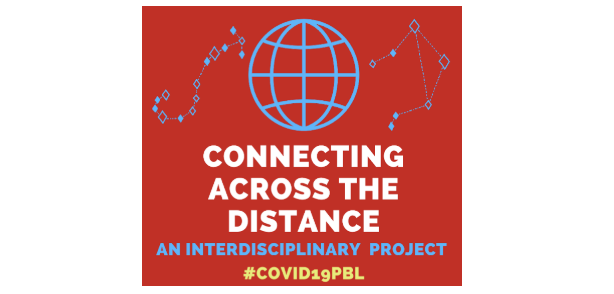
Stay Connected and Updated



